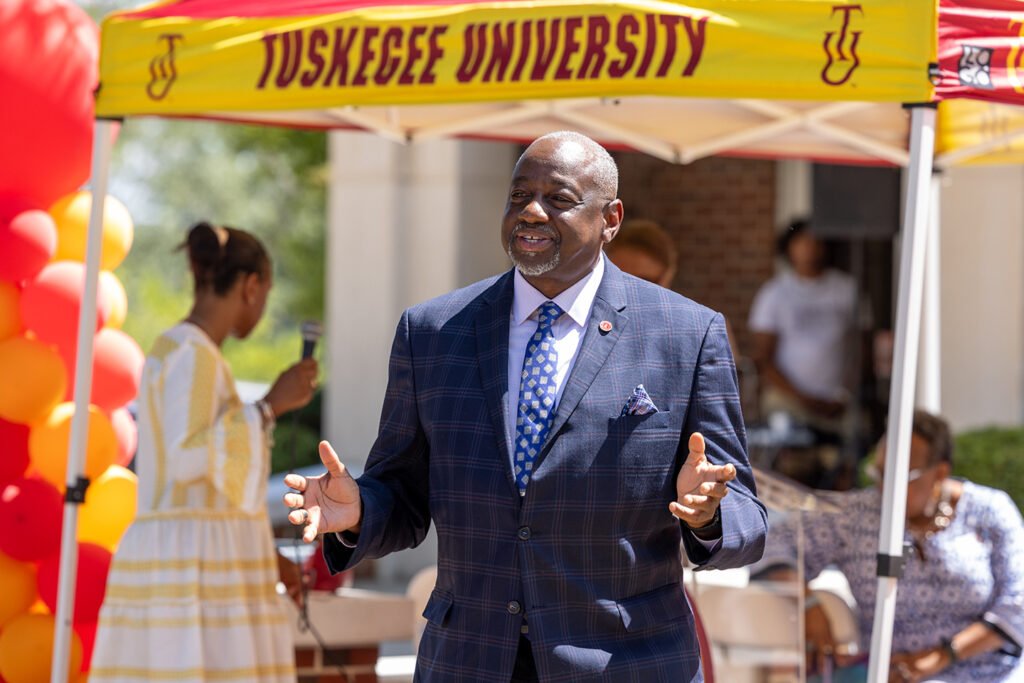More Than a University: The Enduring Legacy of Tuskegee
Tuskegee University (TU), a private, historically black land-grant institution nestled in Tuskegee, Alabama, stands as a beacon of academic excellence and profound historical significance. More than just a school, it is a testament to the resilience, ingenuity, and enduring spirit of African American education and achievement.
A Foundational History of Empowerment
Tuskegee’s story began with a powerful vision on July 4, 1881, when it was established by the Alabama Legislature as a normal school for teachers. The institution quickly came under the guidance of its legendary founder and first principal, Booker T. Washington. Washington transformed the school from a single building into a world-renowned center for learning, focusing on practical skills and self-sufficiency, encapsulated in his philosophy of “learning by doing.”
This focus on agricultural, mechanical, and industrial education paved the way for groundbreaking innovation. It was here that the brilliant scientist and inventor George Washington Carver conducted his revolutionary work, transforming Southern agriculture through his research on peanuts, sweet potatoes, and soybeans. Carver’s laboratory and the impact of his work on the economic empowerment of Black farmers remain central to Tuskegee’s legacy.
A Campus Rooted in Black Architectural Excellence
Tuskegee’s physical campus is itself a work of art and a piece of history. Much of its early design was overseen by Robert Robinson Taylor, the first African American to graduate from the Massachusetts Institute of Technology (MIT). Taylor, in collaboration with David Williston, the first professionally trained African American landscape architect, created the cohesive, beautiful environment that defines the campus today.
Recognizing this importance, the campus was designated as the Tuskegee Institute National Historic Site by the National Park Service in 1974, preserving its architectural and historical treasures for future generations.
The Tuskegee Airmen and World-Changing Contributions
Tuskegee’s contributions extend far beyond the classroom and the laboratory, reaching into the skies during a pivotal moment in global history. The university was the site of the Tuskegee Airmen training program during World War II. These pioneering Black military pilots and support personnel broke racial barriers in the U.S. Army Air Corps, serving with distinction and proving their exceptional skill and courage in combat. They became a powerful symbol of Black excellence and a critical force in the fight for civil rights.
Academic Excellence and a Global Community
Today, Tuskegee University continues its tradition of innovation and excellence across a diverse range of disciplines. The university currently serves nearly 3,000 students from around the U.S. and over 30 countries, fostering a truly global academic environment.
TU offers a comprehensive suite of programs, including:
- 43 bachelor’s degree programs, notably a highly respected five-year accredited professional degree program in architecture.
- 17 master’s degree programs.
- 5 doctoral degree programs, including the distinguished Doctor of Veterinary Medicine (DVM) degree, which is one of the most selective programs in the nation.
The Challenge and the Commitment to Remember
No history is complete without acknowledging its darkest moments. In the early to mid-20th century, Tuskegee was involved in the infamous Tuskegee Syphilis Study in collaboration with the U.S. Public Health Service. While the university played a role in recruiting participants for the study, it’s vital to note that this unethical experiment was ultimately run by the federal government and has since been condemned globally. This painful chapter serves as a stark reminder of the devastating impact of medical racism and remains a powerful motivation for TU’s ongoing commitment to ethical medical research and health equity today.
Tuskegee University continues to be a vibrant place where history informs the future. It molds leaders, innovators, and changemakers who honor the past while blazing new trails for a more equitable world.
What other aspects of Tuskegee’s programs or notable alumni would you like to highlight next on your blog?

Please sign in to see contact details.

Leave a Reply